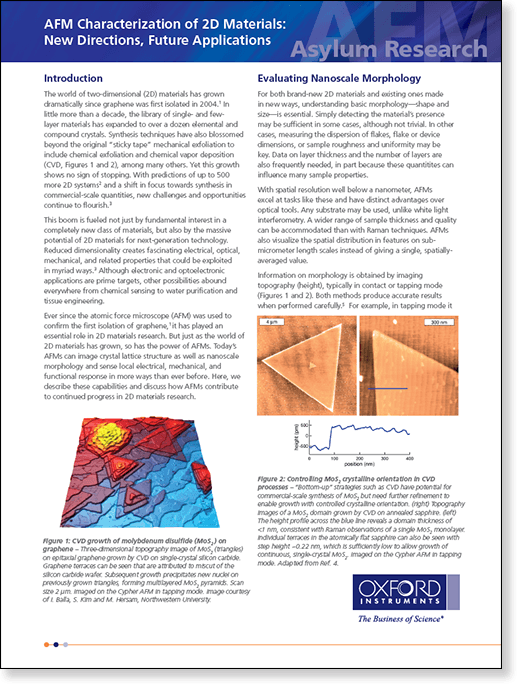
In this article, we'll learn about the working principle of the AFM (Atomic Force Microscope). To learn more about Atomic Force Microscopy, click through.
AFM microscopes are among the best solutions for measuring the nanoscale surface metrology and material properties of samples. A conventional compound light microscope is limited to a maximum sample magnification of approximately 1000x; a quantity that is dictated by the wavelengths of visible light. This provides a resolution of approximately 0.2 micrometers (μm), which means it is impossible to distinguish two points that are closer together than around 200 nanometers (nm). The limitations of this resolving power have become painfully evident in recent decades, particularly since the genesis of advanced technologies like the scanning electron microscopy (SEM) and atomic force microscopy (AFM).
AFM microscopes are based on a unique non-optical surface interrogation technique. This is built on the fundamentals of scanning probe microscopy, which utilizes a physical probe to measure the surface features of samples with atomic resolution for lateral and height measurements.
AFM microscopes operate on the principle of surface sensing using an extremely sharp tip on a micromachined silicon probe. This tip is used to image a sample by raster scanning across the surface line by line, although the method varies dramatically between distinct operating modes. The two primary groups of operating modes are widely defined as contact mode and dynamic, or tapping, mode.
The underlying principle of AFM is that this nanoscale tip is attached to a small cantilever which forms a spring. As the tip contacts the surface, the cantilever bends, and the bending is detected using a laser diode and a split photodetector. This bending is indicative of the tip-sample interaction force. In contact mode, the tip is pressed into the surface and an electronic feedback loop monitors the tip-sample interaction force to keep the deflection constant throughout raster scanning.
Tapping mode limits the contact between the sample surface and the tip to protect both from damage. In this mode, the cantilever is caused to vibrate near its resonance frequency. The tip subsequently moves up and down in what is described as a sinusoidal motion. This motion is reduced by attractive or repulsive interactions as it comes near the sample. A feedback loop is used in a similar fashion to contact mode, except it keeps the amplitude of this tapping motion constant rather than the quasistatic deflection. By doing so, the topography of the sample is traced line by line.
AFM microscopes are extremely versatile tools that are not limited to topographical measurements and imaging applications. They are widely employed to assess mechanical and electrical material properties, alongside ferro- and piezoelectric, magnetic, and thermal properties. These are all conducted as variations of either contact mode or tapping mode and sometimes require a specialized probe.
For example; piezoresponse force microscopy (PFM) utilizes AFM microscopes to characterize the electromechanical coupling of a material system using electrical stimulation via the probe tip. This may require high tip-bias voltages to achieve suitable levels of sensitivity. Although contact mode is used less often than dynamic mode, it is ideal for measuring the electrical properties of samples during imaging as the tip can double as a nanoscale electrode.
AFM microscopes are used in many different fields, including polymer science, semiconductor devices, thin films and coatings, energy storage and energy generation materials, biomolecules, cells and tissues, and many, many others.
Asylum Research specializes in the design and supply of AFM microscopes for a broad range of fields. We supply analytical tools suitable for evaluating the local electrical properties of sample materials, providing insights in ferroelectric materials, semiconducting polymer films, novel 2D materials, and more. These include the Cypher, MFP, and Jupiter families of AFMs.
If you would like any more information about our AFM microscopes, please do not hesitate to contact us directly.

Find out more